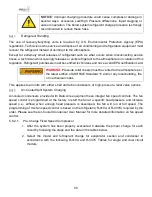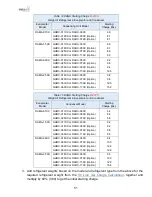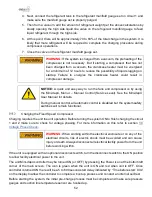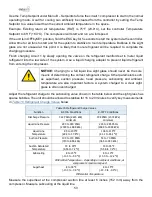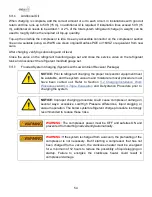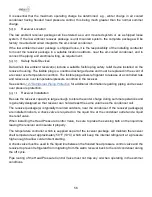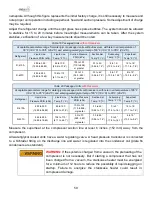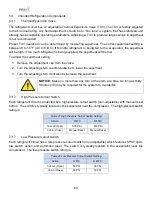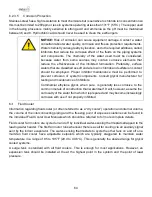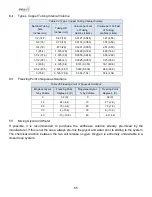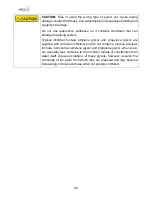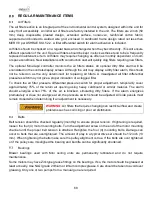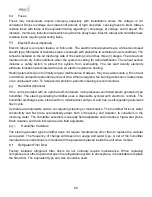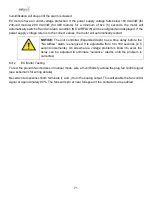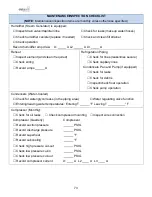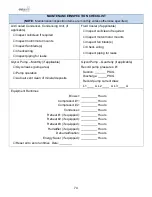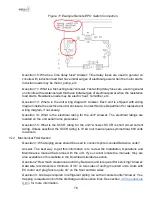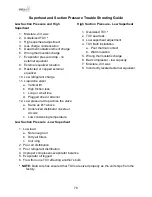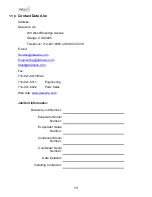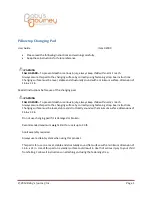
64
6.2.3.5
Corrosion Protection
Stainless steel has a high resistance to most chemicals but is sensitive to chloride ion concentration so
this must be limited to 280ppm or less in systems operating at less than 131°F (55°C). The copper used
in the brazing process is mainly sensitive to strong acid and ammonia so the pH must be maintained
between 6 and 8. Hydrochloric acid should never be used to clean the exchangers.
NOTICE:
Risk of corrosion can cause equipment damage. Contact a water
consultant about water quality, corrosion and freeze protection requirements.
Water chemistry varies greatly by location, as do the required additives, called
inhibitors that reduce the corrosive effect of the fluids on the piping systems
and components. The chemistry of the water used must be considered,
because water from some sources may contain corrosive elements that
reduce the effectiveness of the inhibited formulation. Preferably, surface
waters that are classified as soft and are low in chloride and sulfate ion content
should be employed. Proper inhibitor maintenance must be performed to
prevent corrosion of system components. Consult glycol manufacturer for
testing and maintenance of inhibitors.
Commercial ethylene glycol, when pure, is generally less corrosive to the
common metals of construction than water itself. It will, however, assume the
corrosivity of the water from which it is prepared and may become increasingly
corrosive with use if not properly inhibited
Fluid Cooler
Information regarding fluid cooler (or often referred to as a
“dry cooler”) operation and internal volume,
the volume of the interconnecting piping and the freezing point of aqueous solutions can be found in
the individual Fluid Cooler User Manuals which should be referred to for more complete details.
Fluid cooler fan motors are cycled on and off by individual water-sensing thermostats strapped to the
leaving water header. The first fan motor runs whenever there is a call for cooling via an auxiliary signal
sent by the indoor evaporator. The water-sensing thermostats to cycle the other fans on and off on a
multi-fan fluid cooler have adjustable setpoints which are typically staggered to maintain water
temperature in a range of 85 to 105°F (29.4 to 40.6
C). This is generally the desired range for glycol
cooled systems.
A surge tank is standard with all fluid coolers. This is enough for most applications. However, an
expansion tank should be installed at the at the highest point in the system and the point of least
pressure.
Содержание DAMA-01
Страница 1: ......
Страница 82: ...MiniCeiling_IOM 10 2022...

